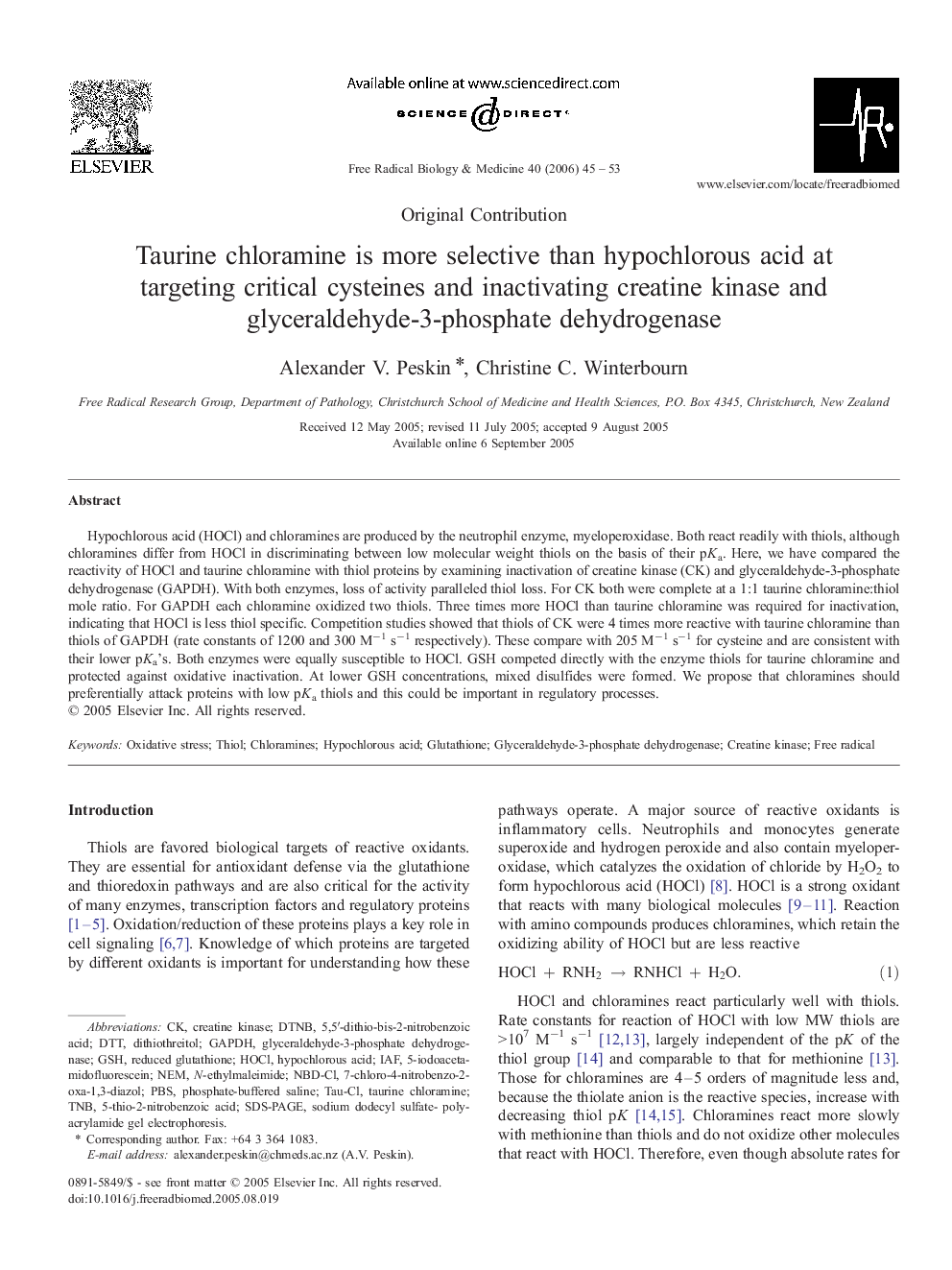| Article ID | Journal | Published Year | Pages | File Type |
|---|---|---|---|---|
| 1911752 | Free Radical Biology and Medicine | 2006 | 9 Pages |
Hypochlorous acid (HOCl) and chloramines are produced by the neutrophil enzyme, myeloperoxidase. Both react readily with thiols, although chloramines differ from HOCl in discriminating between low molecular weight thiols on the basis of their pKa. Here, we have compared the reactivity of HOCl and taurine chloramine with thiol proteins by examining inactivation of creatine kinase (CK) and glyceraldehyde-3-phosphate dehydrogenase (GAPDH). With both enzymes, loss of activity paralleled thiol loss. For CK both were complete at a 1:1 taurine chloramine:thiol mole ratio. For GAPDH each chloramine oxidized two thiols. Three times more HOCl than taurine chloramine was required for inactivation, indicating that HOCl is less thiol specific. Competition studies showed that thiols of CK were 4 times more reactive with taurine chloramine than thiols of GAPDH (rate constants of 1200 and 300 M−1s−1 respectively). These compare with 205 M−1s−1 for cysteine and are consistent with their lower pKa’s. Both enzymes were equally susceptible to HOCl. GSH competed directly with the enzyme thiols for taurine chloramine and protected against oxidative inactivation. At lower GSH concentrations, mixed disulfides were formed. We propose that chloramines should preferentially attack proteins with low pKa thiols and this could be important in regulatory processes.
